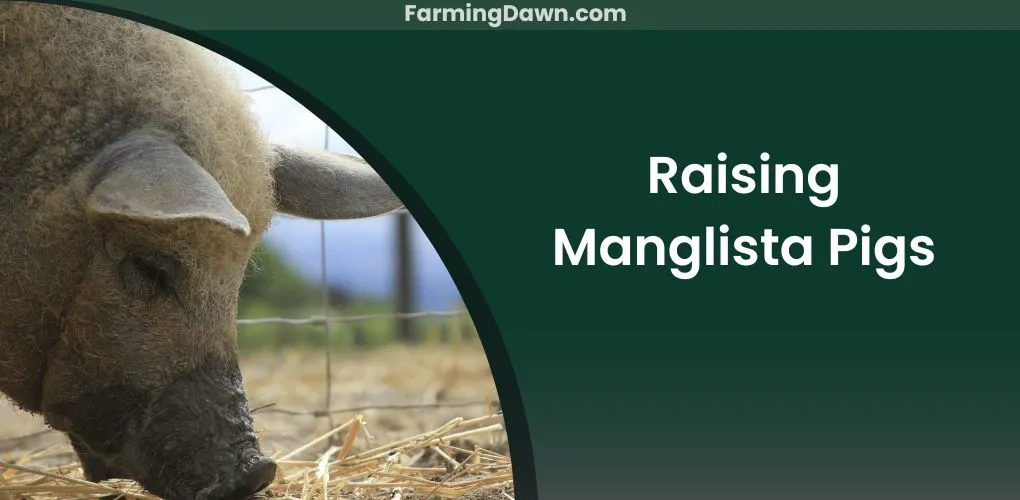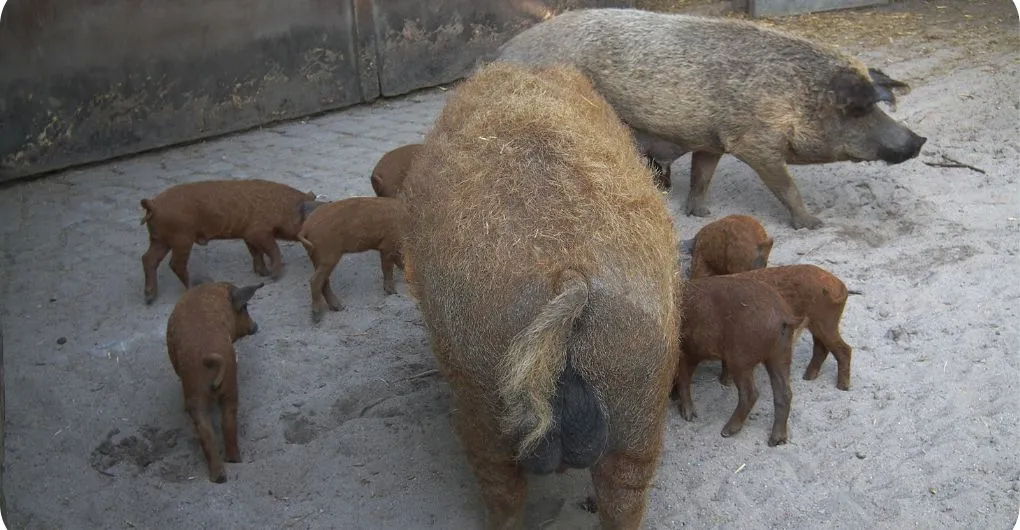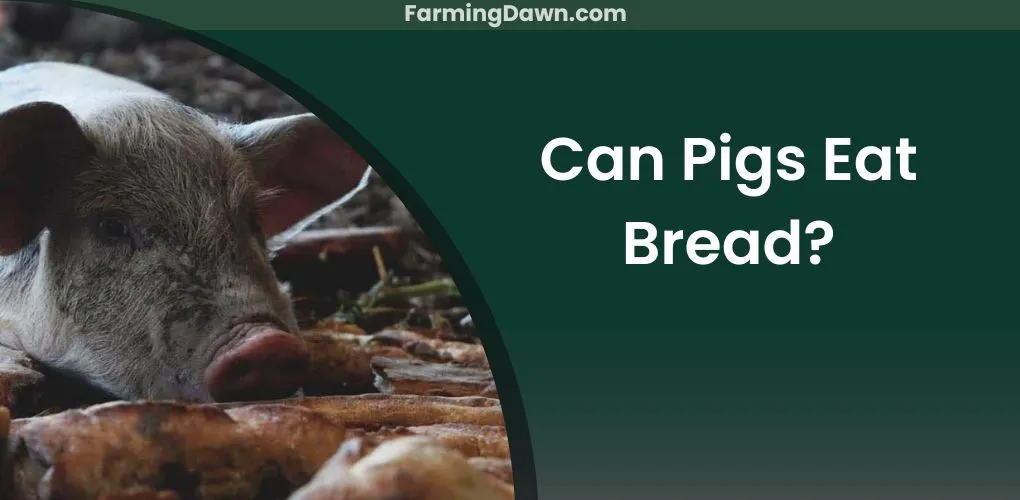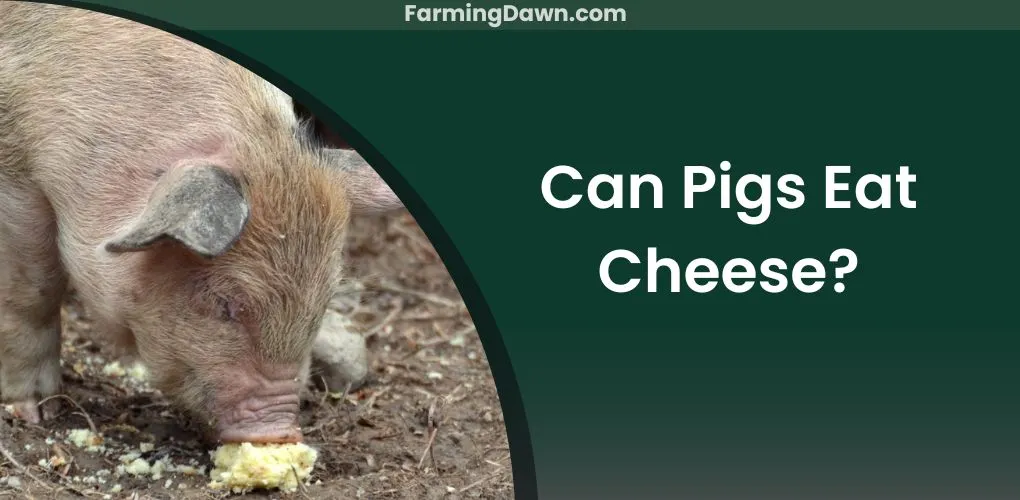Raising Mangalitsa pigs is an exciting and rewarding experience. As a small-scale farmer, it’s enjoyable to watch these unique animals grow and incredibly satisfying to know that you’re producing the highest quality food possible. I’ve been raising Mangalitsas for several years now. I can honestly say that they have brought immense joy into my life. Read on if you want to learn more about how raising Mangalitsas can help build your community and create lasting relationships with those around you!
How Profitable Is It To Raise Mangalitsa Pigs?
Raising Mangalitsa pigs can be incredibly profitable. These animals, also known as ‘woolly’ or ‘mangalica’ pigs, are prized for their tasty and high-quality meat – making them great animals to raise if you want to make money on your farm.
I’ve been raising these beautiful creatures for years and never looked back! Not only is the quality of the meat outstanding, but they are relatively low maintenance compared to other breeds. They love being outdoors and frolicking around in their natural environment; I only have to provide some basic shelter from extreme weather conditions.
Mangalitsas are highly adaptable and hardy when it comes to disease control. This makes them attractive to farmers who want something that will require little extra care or resources. There’s no doubt about it: raising mangalitsa pigs can be an enriching financial and emotional experience!
Raising Mangalitsa Pigs
Breeding Habits
After discussing the profitability of raising Mangalitsa pigs, it’s time to discuss their breeding habits. These unique creatures have a few exciting mating practices that are quite unlike other breeds.
Mangalitsa breeding starts with the courtship ritual. Like most other animals, the dominant male will make his presence known by snorting and growling at his potential mate. He then marks her with his scent before performing an elaborate dance around her to attract interest.
The female is usually receptive to this display. She will eventually follow him into a secluded area where they can begin mating. This process often takes place several times over one day before being completed. The gestation period for these pigs tends to be shorter than many other breeds – typically about three months long – and litters produce anywhere from four to eight piglets each time!
And if you’re looking for more offspring, you’ll need to ensure proper nutrition and care for your pigs during pregnancy so that they can deliver healthy babies when the time comes.
Preferred Environment
I’m a big fan of free-range, outdoor-living Mangalitsas. They should be pasture-raised and allowed to roam in the great outdoors as much as possible. This makes them healthier, happier pigs and helps give their meat that unique flavor they are known for.
In my experience, these animals do best when given plenty of space – both physical rooms to move around and mental stimulation from being outside in nature. They need ample access to fresh air, sunlight, and grassy pastures (or mud holes!), which is why it’s so important that they have sufficient outdoor living conditions. It’s not only good for their overall well-being, but it also contributes significantly to producing quality pork products.
As we advance, let’s explore how to ensure these precious piggies get the nutrition they need for optimal health.
Feeding Habits
Feeding Mangalitsa pigs is one of the most important aspects of raising them. These animals have specific nutrition needs that must be met to keep them healthy and happy, so any owner or farmer needs to understand what types of feed suit these unique creatures.
Mangalitsa pigs are omnivores, which means they eat plant-based foods and some animal proteins. A balanced diet should include a variety of grasses, grains, vegetables, fruits, nuts, and other plant-based sources. Farmers may also provide their herds with insects such as mealworms or crickets.
Animal protein can be offered as fishmeal or meat scraps from processing plants. All food items should generally be free from artificial additives and preservatives; organic produce is especially recommended.
It’s best to provide your herd with plenty of fresh drinking water daily and offer multiple small meals throughout the day rather than just one large one. This helps ensure that each pig receives adequate nutrients without overeating or gaining too much weight. With this feeding schedule and quality feed choices, you’ll help ensure your Mangalitsas stay healthy and strong! Moving on to housing requirements.
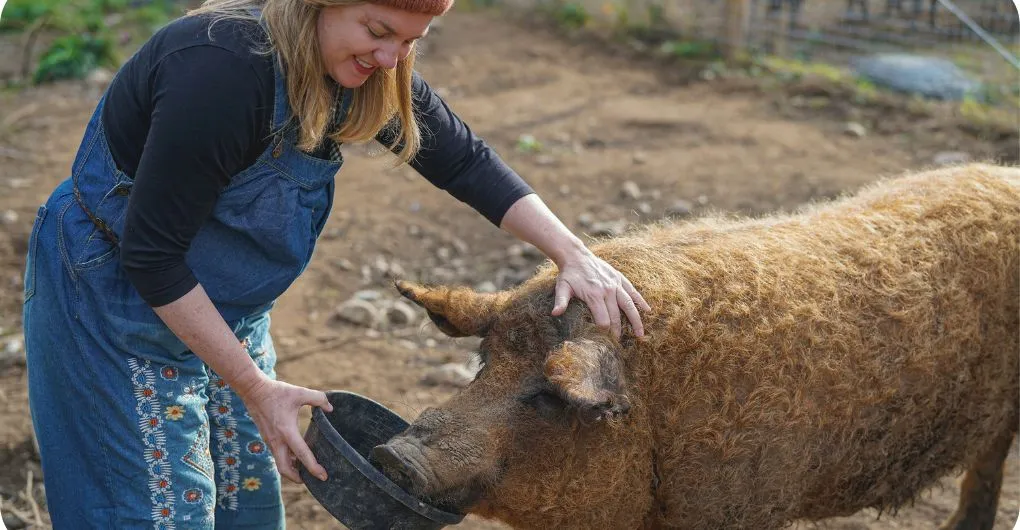
Housing Requirements
As a farmer, one must know that these Mangalitsa porkers need ample housing space with plenty of straw bedding for comfort.
For starters, it is essential to understand precisely how much housing space each pig needs. Generally speaking, two or three square feet per pig should do the trick – but this could vary depending on the breed’s size and other individual specifications.
Furthermore, providing adequate access to fresh air is critical; without adequate ventilation, your piggies can quickly become overwhelmed by heat or humidity. In addition to good outdoor exercise areas, remember that all hogs need some shelter from rain and snow.
Whether you opt for a simple tarpaulin structure over an open-air pen or build an enclosed barn with insulated walls and flooring – make sure your mangalitsas have enough room inside to stretch out, socialize & rest comfortably!
With all this in mind, creating a safe, comfortable living environment for your herd is paramount to their overall health and well-being.
Health Considerations
Now that you’ve learned about the housing requirements for raising Mangalitsa pigs let’s consider some health considerations. Being mindful and proactive regarding disease prevention and vet care with these animals is essential. As with any livestock, there are always potential health risks involved in rearing them.
Regular check-ups with your veterinarian can help identify issues before they become serious. Vaccinating your Mangalitsa against various diseases is also essential to keeping them healthy. If you are dealing with parasites or other ailments, consult a vet quickly so appropriate treatment can be administered soon. These lovable pigs may require extra effort to keep healthy and happy, but it’s worth it!
Grooming Needs
When grooming the Mangalitsa pig, you only need a little equipment. All that’s needed is a good brush and conditioner for their long fur. This breed is known for its thick coat, which needs regular care if you want your pigs to look their best!
Caring for the pig’s coat requires weekly brushing with a quality brush designed for animals with long hair. Brushing removes dirt and dead hairs and helps them stay cool in hot weather. Be sure to use gentle strokes when brushing – be careful not to pull on or tug at any tangles. When finished, run a wide-toothed comb through the fur to help keep it smooth and prevent knotting.
The pigs like to nudge when they are happy and show affection. Properly grooming these animals might create a strong bond between you two.
For conditioning the fur, I recommend using an all-natural product made especially for this type of fur – one that won’t damage the skin or cause allergies. With some time spent on proper grooming, you can maintain healthy-looking Mangalitsa pigs who will shine like royalty!
Now let’s move on to exercise requirements.
Exercise Requirements
Mangalitsa pigs are active animals and need regular opportunities to explore and run around. They love rooting in the ground for food and investigating new things – so make sure they have plenty of space to roam about!
Exercise is essential for animals, especially pigs because it helps with muscle growth and development. Suppose your pig doesn’t get enough activity. In that case, they may become overweight or develop health problems from being sedentary for too long.
It’s best to give your pig an enclosed area outside that contains grass or dirt where they can search for goodies like grubs, worms, and other bugs. You should also provide them with a few toys, such as balls or logs, for enrichment activities.
Also, you can take them out on daily walks (harness training is recommended) so that they get used to different surroundings and smells while getting exercise at the same time! This will help keep them healthy mentally as well as physically. Time spent exercising together creates strong bonds between you both, which is essential when it comes to handling & training tips down the line.
Handling & Training Tips
When raising Mangalitsa pigs, there are a few handling and training tips you old farmers should know. First, respect is the key to successful management: you want your piglets (and their parents) to feel safe and secure in their environment. They must be handled carefully, as rough treatment can cause distress or injury.
With proper handling techniques, you can ensure your animals remain healthy and content during their stay on your farm. Start by familiarizing yourself with the basics – like how to pick up a piglet correctly – so you know what to expect when interacting with them.
Showing patience and consistency will also help build trust between you and your pigs; this way, if you ever need assistance for tasks such as weaning or leading into pens, they’ll always come through for you!
Potential Issues & Solutions For Raising Mangalitsa Pigs
Raising Mangalitsa pigs can be a challenging endeavor. It is important to remember that these are not your average pig breeds, and they require special attention, especially regarding potential health issues.
When raising them, you should know the common diseases associated with the breed, such as mangalitsa pig diseases and parasites. There may also be some piglet mortality issues due to improper care or management practices.
To ensure that your Mangalitsas remain healthy, good farming must be practiced. This includes providing clean housing and adequate nutrition for all animals in your herd and monitoring their general health daily.
Also, regular deworming and vaccination protocols should also be implemented to help prevent any illnesses from developing within the group. By taking these precautions, you can rest assured that your Mangalitsas will stay safe and sound throughout their lifetime.
How Big Do Mangalitsa Pigs Get?
Mangalitsa pigs are typically smaller than most modern swine breeds, with mature males weighing around 300 pounds and females averaging about 220 pounds.
They have short legs and large heads, which gives them an endearing “teddy bear” look. Their curly coats come in shades of black, red, or blonde. Mangalitsa hogs also have thick skin but surprisingly little fat on their bodies; this results in leaner cuts of meat that are very flavorful.
The average lifespan of a Mangalitsa pig is 8-12 years. They are considered to be a slow-growing breed, so they do not reach their full size and weight until they are between 4 and 5 years old. In general, Mangalitsa pigs can weigh anywhere from 200 to 400 pounds when fully grown.
Can You Raise Mangalitsa Pig In Missouri?
Yes, you can most certainly raise Mangalitsa pigs in Missouri. I’m a farmer here and have been raising them for the past couple of years with great success! The Mangalitsas are incredibly hardy animals that thrive in various climates – from cold winters to hot summers. They’re also relatively low maintenance compared to other breeds regarding feeding requirements and general care. And they produce some delicious pork!
Raising Mangalitsa Pigs-Take Away
Raising Mangalitsa pigs is undoubtedly a rewarding experience. These unique animals require special care and attention, but the rewards are many. Watching these intelligent creatures interact with each other can be like observing an intricate dance as they move in perfect harmony around their pen or pasture. The money you will save on feed costs alone makes raising Mangalitsas well worth it; however, there’s nothing quite as gratifying as seeing your herd thrive under your watchful eye.

